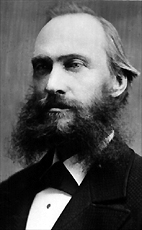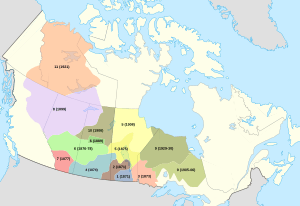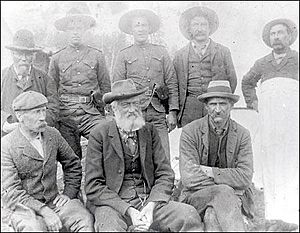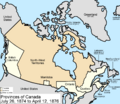David Laird facts for kids
Quick facts for kids
The Honourable
David Laird
|
|
|---|---|

The Hon. David Laird
|
|
| 3rd Lieutenant Governor of the North-West Territories | |
| In office October 7, 1876 – December 3, 1881 |
|
| Monarch | Victoria |
| Governor General | The Earl of Dufferin Marquess of Lorne |
| Preceded by | Alexander Morris |
| Succeeded by | Edgar Dewdney |
| Member of the Canadian Parliament for Queen's County |
|
| In office September 29, 1873 – October 7, 1876 |
|
| Preceded by | none |
| Succeeded by | James Colledge Pope |
| Member of the General Assembly of Prince Edward Island for 4th Queens | |
| In office 1871 – September 29, 1873 Serving with Benjamin Davies
|
|
| Preceded by | None |
| Succeeded by | William Welsh |
| Personal details | |
| Born | March 12, 1833 New Glasgow, Prince Edward Island |
| Died | January 12, 1914 (aged 80) Ottawa |
| Nationality | Canadian |
| Political party | Liberal |
| Spouse |
Mary Louise Owen
(m. 1864) |
| Children | 6 |
| Alma mater | Presbyterian Theological Seminary |
| Occupation | newspaper editor, publisher |
| Profession | Politician |
David Laird (March 12, 1833 – January 12, 1914) was an important Canadian politician. He was born in New Glasgow, Prince Edward Island, into a family known for helping their community. His father was a long-time politician. David became a Liberal politician himself. He also started and edited a newspaper called The Patriot.
At first, David Laird was against Canada becoming a country. But he later helped Prince Edward Island join Canada. He became a Liberal member of the Canadian parliament. He served as the Minister of the Interior. In this role, he helped create the Indian Act. He was also the first Lieutenant Governor of the North-West Territories. He worked to negotiate several treaties with Indigenous peoples. People remembered him as a hard-working and honest federal official.
Contents
Who Was David Laird?
Early Life and Family
David Laird was born in New Glasgow, Prince Edward Island. His parents, Alexander Laird and Janet Orr, moved to Prince Edward Island from Renfrewshire, Scotland in 1819. His father was a successful farmer and a member of the Island's government. David's older brother, Alexander, was also a politician.
On June 30, 1864, David married Mary Louise Owen. Her brother was the Island's Post Master. David and Mary Louise had six children. David Laird first studied to become a minister. But he later became a journalist and newspaper editor instead.
Starting a Newspaper
In 1859, David Laird started a newspaper called The Protestant and Evangelical Witness. In 1865, its name changed to The Patriot. The newspaper aimed to share its views on religious and social topics. Laird wanted to discuss important issues of the time.
David Laird's Political Career
Prince Edward Island Politics
David Laird first opposed Prince Edward Island joining Canada. However, in 1873, he was sent to Ottawa to help negotiate Prince Edward Island's entry into the new country.
He served on the Charlottetown City Council. He also worked on the Board of Education and the Board of Works. He was a Governor of the Prince of Wales College. From 1871 to 1873, he represented Belfast in the Prince Edward Island government. Then, from 1873 to 1876, he represented Queen's County in the Canadian federal parliament.
As a leader of the Liberal Members of Parliament from Prince Edward Island, he helped bring down the Conservative government led by John A. Macdonald. After that, Alexander Mackenzie became Prime Minister. Mackenzie appointed David Laird as the Minister of the Interior. He held this position from 1873 to 1876.
Minister of the Interior
As Minister of the Interior, David Laird also served as the Superintendent-General of Indian Affairs. During this time, he helped pass the Indian Act into law. This law aimed to manage the lives of Indigenous peoples in Canada. He was known for being trustworthy in his dealings.
In 1874, Laird helped prepare the way for the Canadian Pacific Railway. He negotiated Treaty 4 with local First Nations groups in southern Saskatchewan. This treaty helped secure land for the railway and telegraph lines.
Lieutenant Governor of the North-West Territories
In 1876, Prime Minister Alexander Mackenzie appointed Laird as the Lieutenant Governor of the North-West Territories. This was a very important job. He was in charge of a huge area of land.
Laird was responsible for negotiating Treaty 7 with the Blackfoot Confederacy. This happened in 1877. In 1899, he also successfully negotiated Treaty 8 in the Athabasca district.
Laird ordered the capital of the North-West Territories to be moved. It moved from Fort Livingstone to Battleford. He held the office of Lieutenant Governor until 1881.
The Buffalo Disappearance
During the 1870s, the number of buffalo on the Canadian Prairies dropped sharply. This was a huge problem for the Plains Indigenous peoples. Their lives depended on the buffalo for food and trade.
Laird warned the government about this serious issue. He explained that the buffalo were the main food source for many Indigenous tribes. He also noted that trading buffalo hides was a big part of the country's economy. By 1879, the buffalo had almost completely disappeared. This caused a severe famine. Laird and other officials worked to create a plan to help. They decided to distribute large amounts of food like beef, bacon, and flour to help the Indigenous communities survive the crisis.
Return to Prince Edward Island
After his time as Lieutenant Governor ended in 1881, David Laird returned to Prince Edward Island. He ran for parliament again but was not elected in 1882. After this, he worked as the editor of the Charlottetown Patriot newspaper until 1889.
Working on Treaties
In 1870, the Canadian government took over land previously owned by the Hudson's Bay Company. This made Indigenous peoples worried. To address these concerns, the Canadian government began negotiating treaties with different tribes. David Laird played a big part in negotiating Treaties 4 through 8.
Treaty No. 4 (Qu'Appelle Treaty)
Treaty 4 was signed in 1874 with the Cree and Saulteaux peoples. It covered much of what is now southern Saskatchewan. It also included parts of Manitoba and Alberta. The first signings happened at Fort Qu'Appelle, Saskatchewan in September 1874.
David Laird was one of the government's representatives for this treaty. His presence showed that the federal government supported the negotiations.
Treaty No. 5 (Winnipeg Treaty)
Treaty 5 was signed in 1875 with the Saulteaux and Swampy Cree peoples around Lake Winnipeg. David Laird supported the negotiations. His goal was to get Indigenous peoples to give up their claims to the land. This would allow new settlers to establish their own properties.
Treaty No. 6 (Fort Carlton and Pitt)
Treaty 6 was signed in 1876. It covered central parts of what are now Alberta and Saskatchewan. David Laird, as Minister of the Interior, led this process. The delay in negotiations caused some unrest among Indigenous tribes. Leaders in the West told the government in Ottawa about their concerns.
Indigenous groups had been promised a treaty, but negotiations had not started. In 1875, a geological survey team and a telegraph crew were stopped by the Cree. The Cree decided not to allow more expeditions until a treaty was made. David Laird then arranged for treaty negotiations to happen the next summer. He trusted the lead negotiator to make fair terms for the treaty.
After Treaty 6 was signed, David Laird reported that many Indigenous groups were starting to farm. They were happy with the seeds they received and planned to grow more crops.
Treaty No. 7 (Blackfoot Confederacy)
Treaty 7 was signed in 1877 with the Blackfoot Confederacy in southern Alberta. The agreement was signed at the Blackfoot Crossing of the Bow River. Chief Crowfoot was one of the important leaders who signed this treaty.
The treaty created a reserve for the Blackfoot. It also promised yearly payments and supplies from the government. In return, the tribes gave up their rights to their traditional territory. David Laird was one of the commissioners appointed to negotiate this treaty. He was chosen because of his experience and official position.
Treaty No. 8
In May 1899, David Laird traveled to Lesser Slave Lake to negotiate Treaty 8. He told the assembled Indigenous peoples that the Queen wanted to make an offer. He explained that as white people were coming into their country, the government wanted to acknowledge the Indigenous peoples' claims to the land. He offered them terms in exchange for their land rights.
The Indian Act
In 1876, David Laird, as Minister of the Interior, oversaw the creation of the Indian Act. This law brought together earlier laws about Indigenous peoples. It treated Indigenous peoples as if they were children who needed the government's guidance. The idea was to help Indigenous peoples become more like the rest of Canadian society through education and other means.
Later Years and Legacy
David Laird later moved back west to Manitoba. He became president of the Manitoba Historical and Scientific Society from 1903 to 1904. He was appointed Indian Commissioner for the Northwest Territories, Manitoba, and Keewatin. He held this job until his death. After 1909, he also advised the Department of Indian Affairs.
Laird passed away in Ottawa on January 12, 1914. The town of Laird, Saskatchewan was named in his honor.
How People View Laird Today
While early historians often praised Laird's work with Indigenous peoples, more recent scholars have different views. Laird was seen as hard-working in negotiating treaties. However, some of his views about Indigenous cultures were not positive. He believed that higher education was not necessary for Indigenous youth. He thought they only needed basic skills. This policy of limiting opportunities for Indigenous youth is now seen as problematic.
Laird's Impact
David Laird's negotiation skills helped Prince Edward Island join Canada. His work on Indigenous matters, including the Indian Act and the treaties, still affects the relationship between the Canadian government and Indigenous peoples today. These treaties and laws continue to be important in legal discussions.
In North Battleford, Saskatchewan, there are sculptures that show the area's history. One of them includes a portrait of David Laird.
See also
- 1st Council of the Northwest Territories
- Edgar Dewdney
Images for kids








